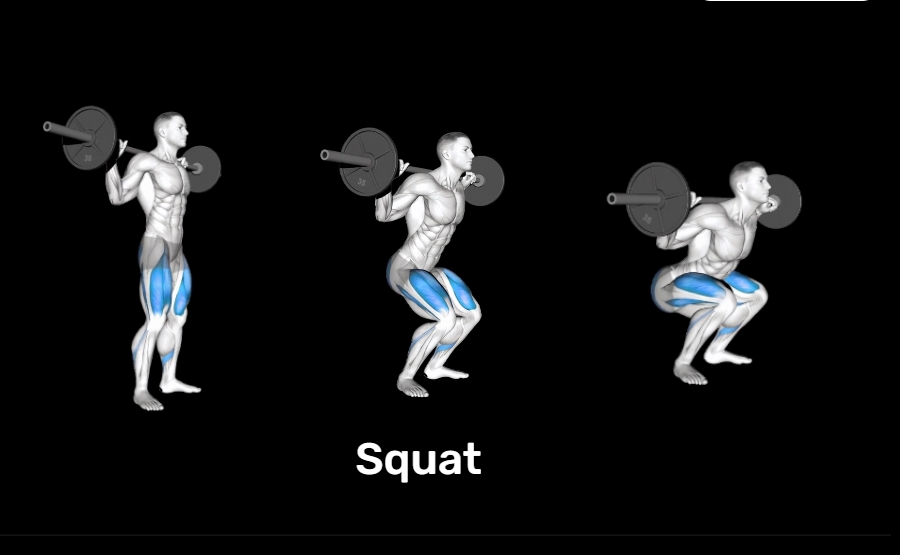Are Deep Squats Bad for Your Knees? No, deep squats are generally not bad for your knees. Let me cut straight to the chase, because I know this question nags at so many lifters, athletes, and even folks just wanting stronger legs. In fact, when done correctly, they’re one of the best things you can do for long-term knee health. I’ve spent years studying how the human body moves and adapts, and I can tell you, the evidence – and my own clinical observations – consistently show that deep squats, performed with proper form, actively strengthen the muscles and tissues surrounding the knee, boost joint mobility, and promote overall resilience. The real villain isn’t depth; it’s how you move and whether you push through pain. Keep those knees tracking over your toes, listen to your body, and deep squats become your knee’s ally, not its enemy. Let me explain why, step by step.
1. Benefits of Deep Squats
Think of your knee joint like a complex, precision hinge. It thrives on controlled stress and strong support. That’s where deep squats shine:

- Strength & Stability Galore: Going deep forces your quadriceps, hamstrings, glutes, and even those smaller stabilizing muscles around the knee (like the popliteus and the vastus medialis obliquus – VMO) to work harder through a fuller range. I remember analyzing EMG data early in my career – the deeper the squat, the more intense the muscle activation around the knee joint, particularly in the crucial top and bottom ranges. This builds a powerful muscular “corset” that protects the joint itself. Weak muscles? That’s a prime recipe for instability and injury.
- Unlocking True Mobility: Our modern, sedentary lives often leave us stiff. Deep squats are a fundamental human movement pattern – think about toddlers effortlessly dropping into a full squat. Performing them regularly helps maintain or regain that essential ankle dorsiflexion, hip flexion, and knee flexion mobility. I’ve worked with countless desk-bound patients whose knee aches vanished not by avoiding bending, but by gradually, safely reclaiming their full squat depth under load, freeing up stiff joints.
- Enhanced Joint Health & Lubrication: Movement is life for your joints. Deep squats take your knee through its complete, natural range of motion under load. This stimulates synovial fluid production – your joint’s natural lubricant and shock absorber. It also promotes nutrient flow to the cartilage. Studies, including some fascinating MRI work I’ve reviewed, suggest this full-range loading can actually improve cartilage health compared to partial movements. It tells your body, “Hey, we use this whole joint here, keep it healthy!”
2. Proper Form of Deep Squats is Crucial
Here’s the critical caveat I hammer home to every client and student: The benefits vanish instantly if your form breaks down. Deep squats demand respect and attention. I learned this the hard way early on, tweaking my own knee slightly by letting my ego override technique with too much weight. Don’t make my mistake! Master these pillars:
- Knee Alignment is King: Your knees must track in line with your 2nd and 3rd toes throughout the entire movement. No caving inwards (valgus) or bowing outwards excessively (varus). Watch them in a mirror or get a form check. This protects your ligaments.
- Back Straight, Not Vertical: Maintain a neutral spine! Think “long spine” from tailbone to skull. Avoid excessive rounding (flexion) or overarching (extension). Your torso angle will naturally lean forward as you go deep – this is normal. I cue “proud chest” – imagine showing off a logo on your shirt.
- Core Engagement = Power Transfer: Brace your abs like you’re about to be punched in the gut! A strong, engaged core stabilizes your entire torso, protects your spine, and ensures force travels efficiently from your legs through your body. A wobbly core means wobbly knees.
3. How to Squat Deep Safely
Getting deep safely isn’t just about forcing yourself down. It’s a skill:
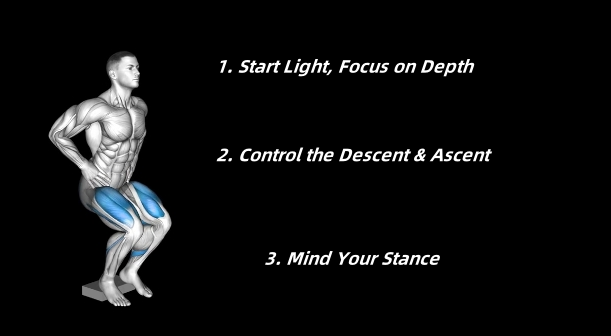
- Start Light, Focus on Depth: Ditch the heavy weights initially. Use just your bodyweight, a light kettlebell held goblet-style, or an empty barbell. Your sole focus is achieving depth with perfect form. Goblet squats are fantastic for learning – the weight in front acts as a counterbalance.
- Control the Descent & Ascent: No dropping! Lower yourself under control (3-4 seconds down). Pause briefly at the bottom without relaxing. Drive up powerfully, but smoothly, through your whole foot – heels, balls of feet, toes all connected to the floor. Feel the power coming from your hips and glutes.
- Mind Your Stance: Play with foot width and toe angle. A slightly wider stance often allows for deeper hip flexion. Point toes out slightly (15-30 degrees) – this usually helps the knees track properly. Find your strongest, most comfortable position. There’s no single “perfect” stance for everyone.
4. Modifying Squats Movements
Let’s be real: not everyone can – or should – dive straight into deep barbell back squats. That’s perfectly okay! As someone who’s assessed hundreds of squats in my lab and clinic, I’ve learned that modification isn’t failure; it’s intelligent training. Finding the right variation can make all the difference between knee strain and knee gain. Here are my go-to modifications, ones I regularly prescribe and use myself when needed:
- Wall Squats: Your Form Foundation
Lean your back flat against a wall, feet slightly forward. Slide down as if sitting in a chair, aiming for thighs parallel (or as low as comfortable), and HOLD.
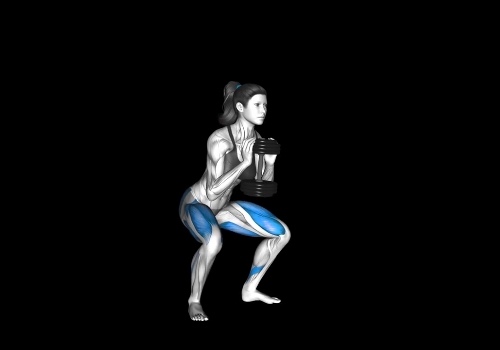
- Goblet Squats: The Deep Squat Teacher
Hold a dumbbell or kettlebell vertically against your chest, close to your sternum. Squat down between your legs, keeping elbows pointed down inside knees.
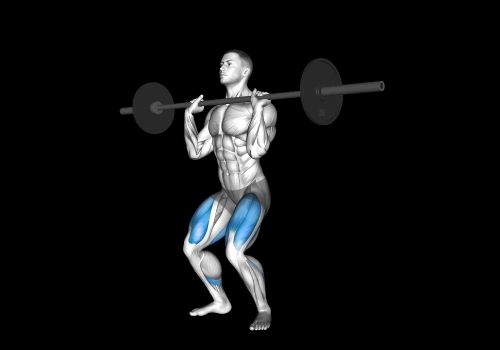
- Front Squats: Shifting the Load, Sparing the Spine
Rest a barbell (or hold dumbbells) on the front of your shoulders (“rack position”). Keep elbows high throughout. Squat down, maintaining a very upright torso.
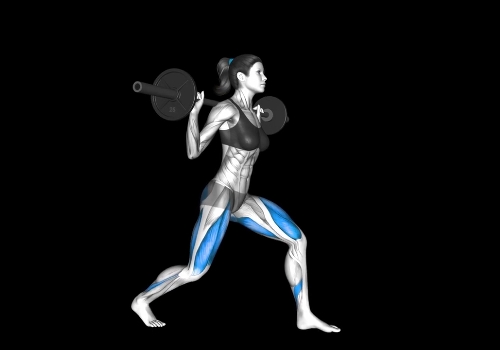
- Split Squats : Building Unilateral Stability
Stand in a staggered stance, one foot forward, one back. Lower straight down until your back knee nearly touches the floor, keeping your front knee aligned over your ankle. Push back up through your front heel. - Pistol Squats: The Advanced Test
Extend one leg straight out in front. Squat down on the standing leg, lowering as far as possible while keeping the extended leg off the ground, then stand back up.
5. When Deep Squats Might Need a Pause
- Individuals with Specific Conditions: If you have a diagnosed knee condition (like acute ACL tear, severe untreated meniscus tear, advanced bone-on-bone osteoarthritis causing constant pain), recent significant surgery, or certain hip impingements, deep loaded squats might be contraindicated during healing or require specific modifications prescribed by your physio or doctor. Never push through sharp or specific joint pain.
- Pain is Your Stop Sign: If you feel any sharp, pinching, or localized pain in the knee joint (not general muscle soreness) during a deep squat, STOP. Pain is a signal. Forcing through it is asking for trouble. Reassess form, reduce depth, reduce weight, or choose a different exercise temporarily.
- Severe Lack of Mobility: If you simply cannot achieve depth without significant compensations (like extreme butt-wink causing lumbar rounding, or heels lifting off the floor), forcing deep squats with heavy loads is risky. Address the underlying mobility restrictions (ankles, hips, thoracic spine) first through dedicated stretching and mobility work, then gradually reintroduce depth.
So, are deep squats bad for your knees? Absolutely not. The persistent myth that deep knee bending is inherently harmful just doesn’t hold up to biomechanical scrutiny or clinical experience. Properly executed deep squats are a potent tool for building formidable knee strength, enhancing crucial mobility, and fostering robust joint health. The power lies entirely in your hands (or rather, your knees and hips!).
Welcome! I’m Jordan Mitchell, the dedicated editor at Leadman Fitness, where we specialize in manufacturing high-quality bumper plates, barbells, weight machines, kettlebells, and dumbbells. With a passion for fitness and a keen eye for detail, I ensure that our product information is clear, accurate, and engaging for our customers. My role involves collaborating closely with our design and production teams to highlight the innovative features and superior craftsmanship that set Leadman Fitness apart in the industry. Whether you’re a professional athlete or a fitness enthusiast, I’m here to provide you with the information you need to achieve your training goals with our top-of-the-line equipment.
